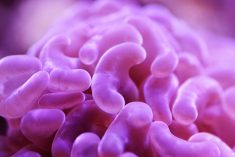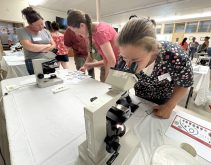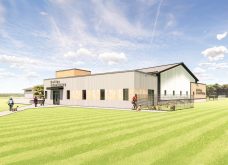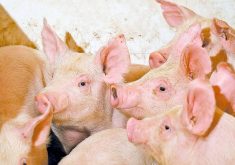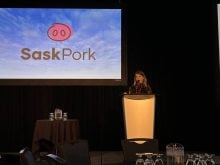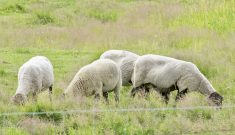Less time standing on concrete, less time in headlock gates, less stress and more time expressing natural instincts are the modern-day keys to what is an evolving understanding of cow comfort for dairy cattle.
“Let them eat without stress, let them rest without stress, and let them calve without stress,” said world-recognized cow behaviour specialist Dr. Joep Driessen during a recent webinar hosted by Ireland-based dairy artificial intelligence company Cainthus. “If you do these three things right, you can make money anywhere on the globe with cows.”
Why it matters: Providing the means to enable cows to better express natural behaviours translates into better bottom lines.
Read Also

BinSentry sensors reduce feed-bin outages
BinSentry sensors mean fewer feed bin outages and more efficient deliver for feed mills.
The webinar also featured Wisconsin-based veterinarian and dairy farmer Dr. Don Niles.
For Niles, one of the most significant recent changes on his two farms has been a reduction in the time spent confined to headlocks.
This was done by shifting to injection-free, pneumatic vaccination technology and careful scheduling of when pregnancy checks are performed. Cows are now typically confined once per week or less.
“The cows can be cows,” he said, adding the farms have recorded a significant increase in per-cow milk production since implementing this protocol. “I think their life is changed because of what we did.”
The Netherlands-based Driessen, the originator of the Cow Signals program linking cattle behaviour and profitability, highlighted continuing research linking litres produced and the amount of time spent either waiting to be milked or actually being milked.
Taking one hour away from this process “is one extra litre of milk,” he insisted. He said one of the studies confirming this relationship was conducted under the leadership of the University of Guelph’s Dr. Trevor Devries.
California-based Cainthus representative Dr. Tyler Bramble confirmed this relationship but added some farms have a long way to go to take advantage of it. On some American farms, he said, cows spend up to 4.5 hours per day making their way through the milking process, meaning “they’re on their hoofs on concrete for too long.”
The webinar began with a request to define cow comfort. Niles responded that 20 years ago when cow comfort first became popular among dairy advisers, the term was mostly about stalls: size, type of construction, bedding.
This came, he suggested, as a reaction to the transition of North American dairy herds from spending a significant time on pasture to living permanently inside barns.
In recent years, cow comfort has evolved considerably.
“Now, we’re trying to create the ideal environment for the cow, from all aspects, not just the surface they’re laying on.”
“We’re improving every year how we recognize what a cow’s natural behaviour is,” Niles continued. “That, economically, is really paying off.”
According to Driessen, the big killer of profitability is lameness, which, he said, “is the opposite of cow comfort.” And lameness relates not only to time spent walking or standing on concrete either being milked or eating but also to time spent resting.
From his experience, the optimum rest time is between 12-14 hours. Dairies that achieve this goal, he said, see better feed efficiency, less illness and fewer sick calves.
Bramble, noting that he has seen farms with first-lactation heifers “struggling to meet seven hours” resting, asked if cows of different ages or in different stages of lactation may have differing rest requirements.
Responding to a question about lighting, Niles said his farms recently installed a very good cooling system but this reduced the need to have the curtains open on the barns. To counteract this removal of natural lighting, they also put in high-quality, high-lumen bulbs.
These are switched to short-day output in the evening, extending the lit period from the established optimum of 16 hours to 18 hours, to enable employees to complete necessary tasks. This is followed by a period with no light.
Niles suggested we’ll soon be able to know everything we need to know about cows from inline sensors, including reproduction, health and other parameters. This will further eliminate the need for lock-ups and stressing out the herd.
“So they can just be cows; that’s the golden ring we’re all looking for.”





